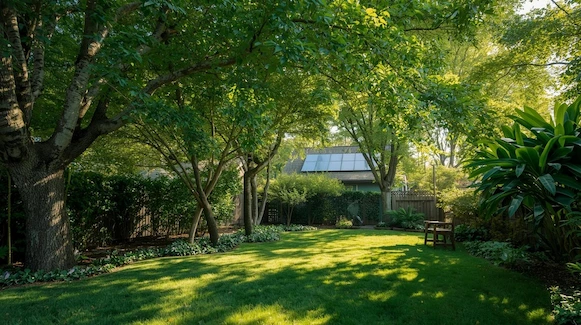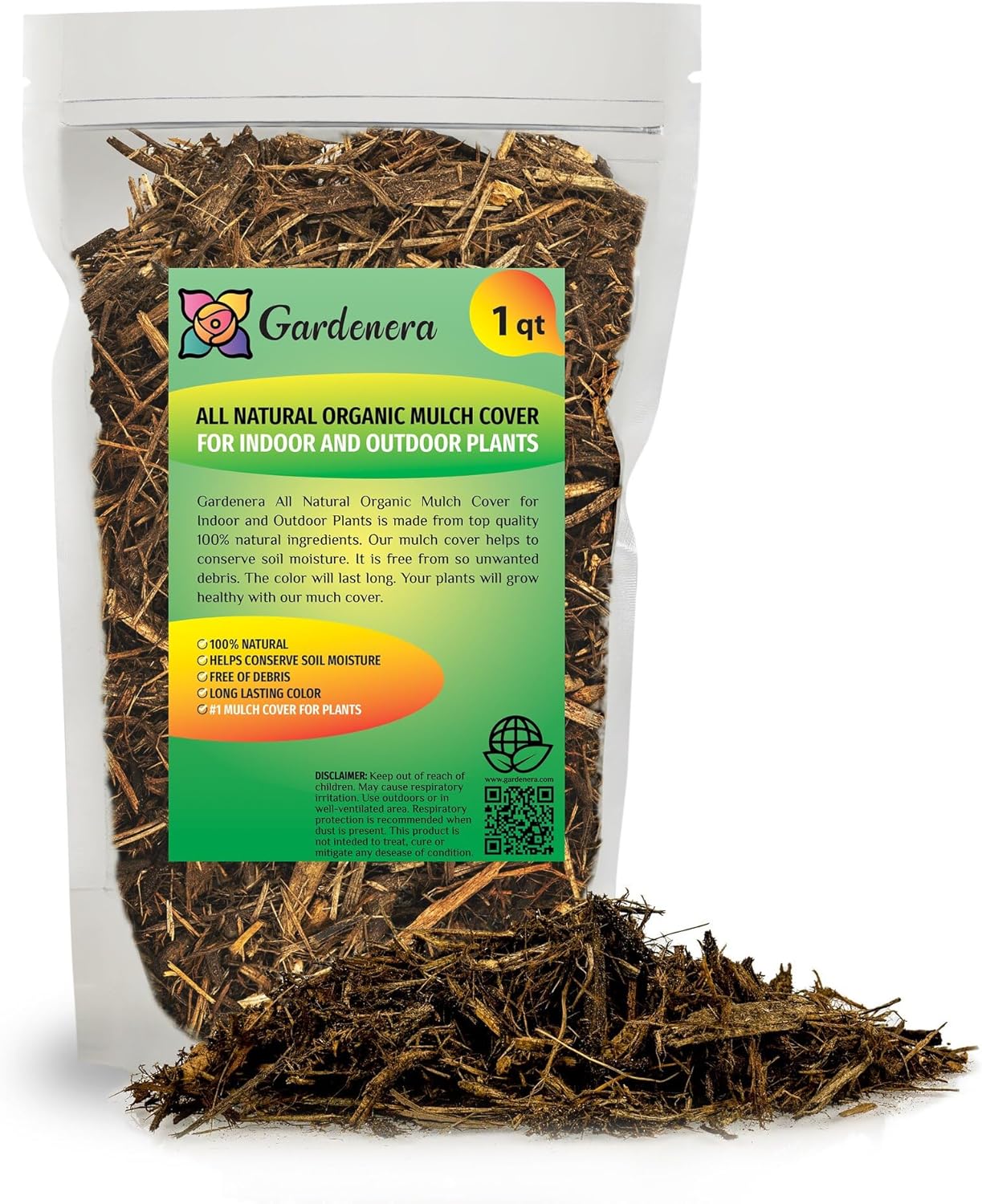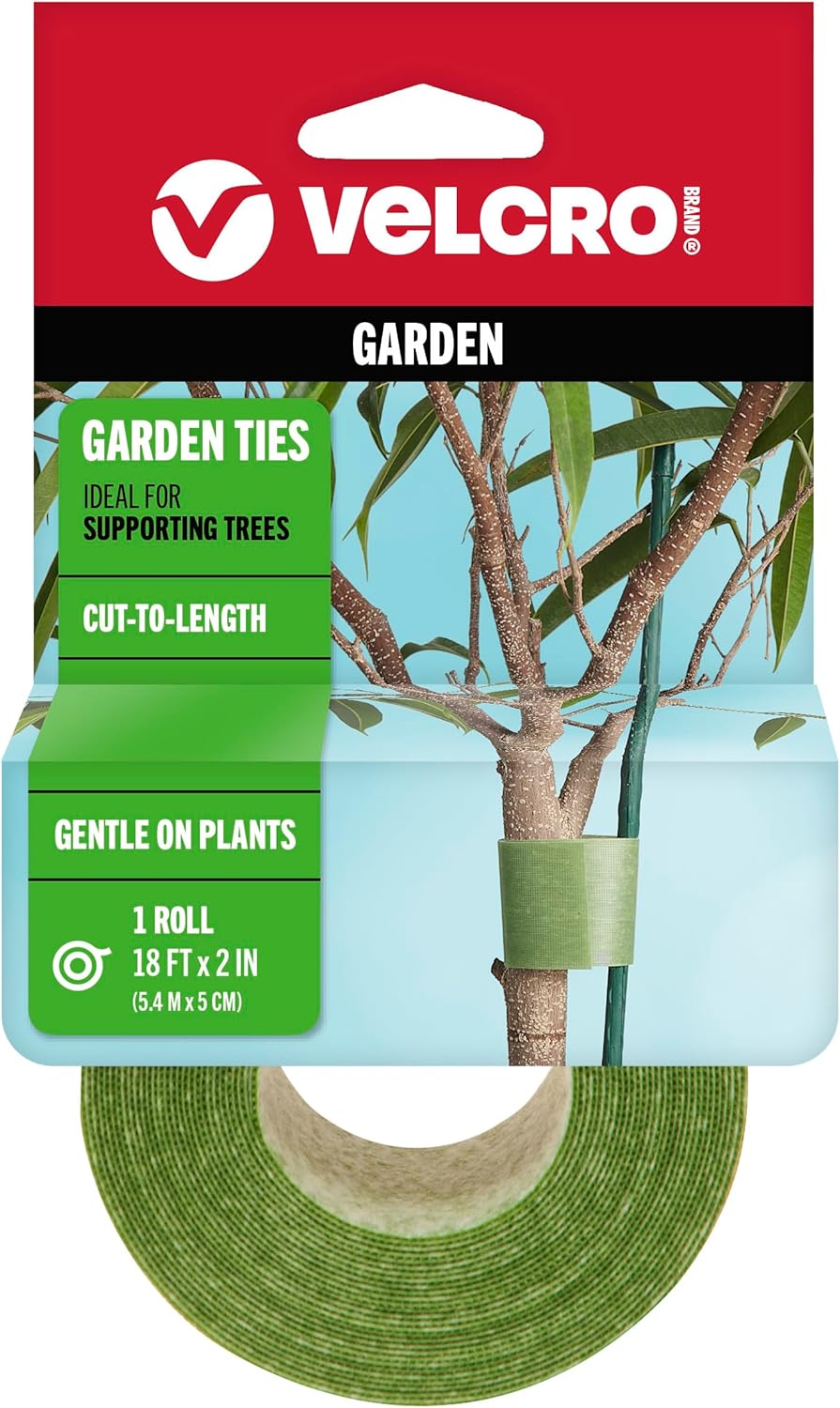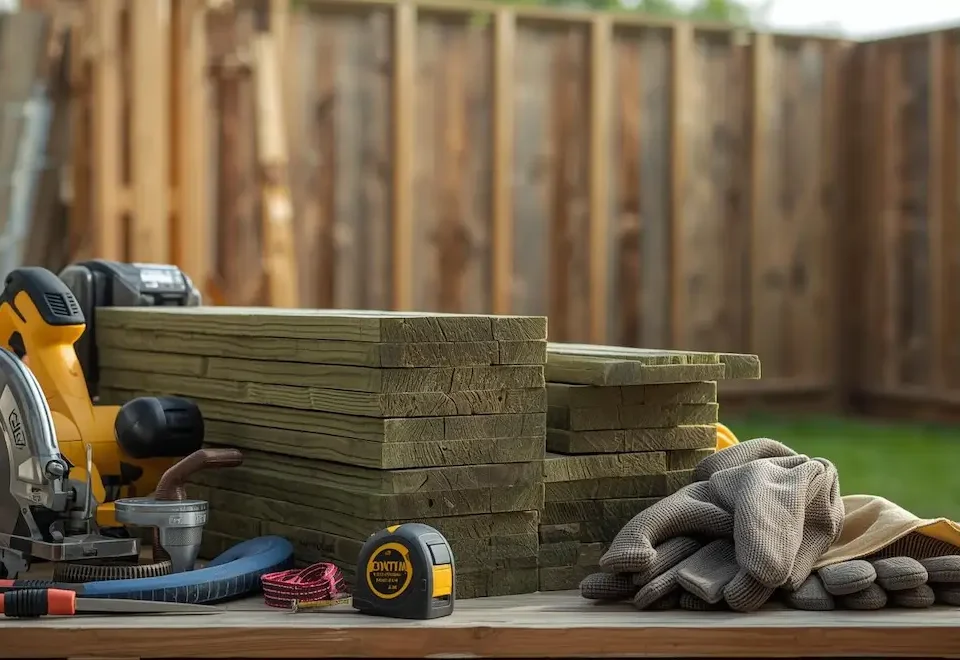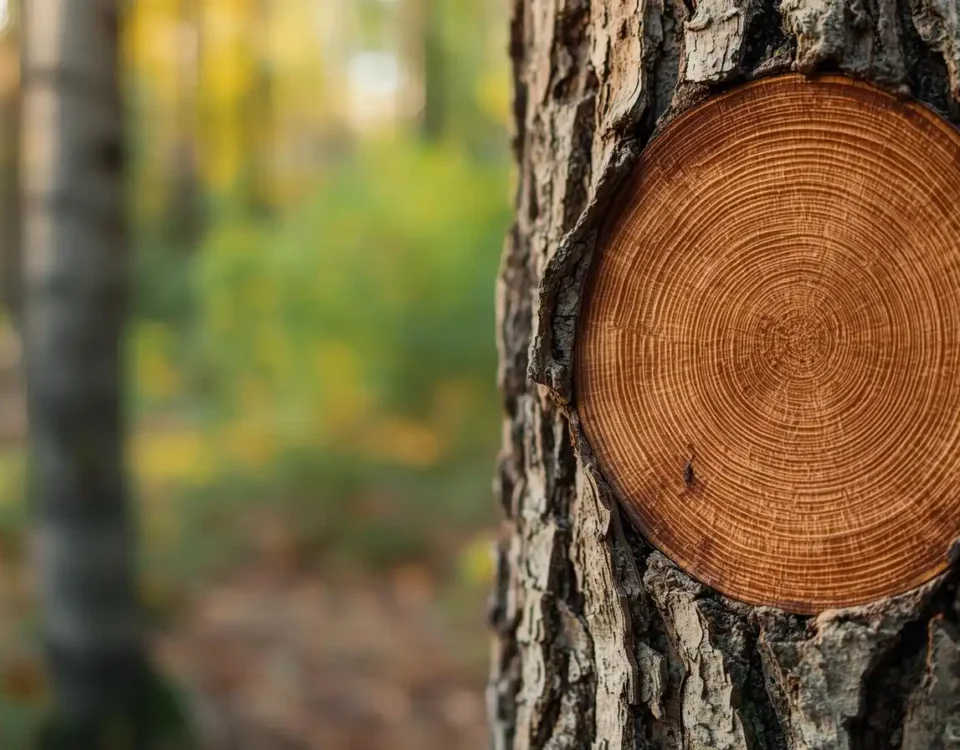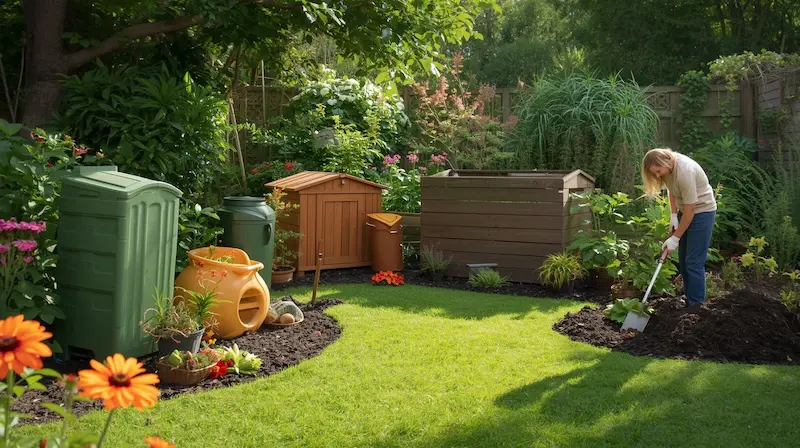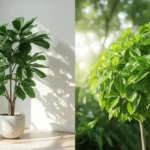
Ficus Tree Mastery The Comprehensive Guide to Thriving Indoor & Outdoor Ficus
October 25, 2025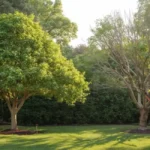
Stop Lion’s Tailing The DIY Guide to Healthy Tree Pruning for Strong, Beautiful Trees
October 27, 2025
Are you feeling the heat, both from soaring energy bills and the growing concern for our planet’s future? Many homeowners and communities are struggling with sweltering summers, urban heat islands, and the overwhelming effects of climate change. It can feel like there’s little we can do to cool down our homes while also making a positive impact on the environment.
The good news is that a natural, powerful solution is closer than you might think, right in your own yard. By strategically planting fast-growing trees, you can transform your property into a micro-cooling oasis. These trees don’t just provide shade; they lower temperatures, cut energy consumption, and play an active role in supporting a healthier planet.
In this guide, you’ll discover how to select, plant, and care for trees that offer immediate relief from the heat, enhance your landscape’s beauty, and serve as long-term allies against climate change. By following these strategies, you can create a cooler, greener, and more energy-efficient home and community.
The Urgent Need for Green Cooling: Turning Up the Heat on Climate Action
Our planet is warming at an unprecedented rate. According to the latest reports from the Intergovernmental Panel on Climate Change (IPCC) and data from NOAA, global temperatures have risen by approximately 1.1°C since the pre-industrial era, with the past decade being the warmest on record. This increase might seem small on paper, but even slight temperature shifts have dramatic effects, more frequent heatwaves, extreme weather events, and rising energy demands to keep our homes cool.
Urban areas are feeling this heat more intensely due to the urban heat island effect. Cities, with their dense networks of concrete, asphalt, and other impervious surfaces, absorb and re-emit heat far more than natural landscapes. The result is elevated local temperatures, higher energy consumption for air conditioning, and serious health risks, including sudden branch drop syndrome.
This is where trees come in as nature’s air conditioners. Strategically planted trees can shade homes, streets, and public spaces, reducing surface temperatures by several degrees. Beyond providing shade, trees actively sequester carbon, helping to slow the pace of climate change. Their canopy cools the air through evapotranspiration, a natural process where water evaporates from leaves, lowering surrounding temperatures.
Imagine transforming your yard into a “Climate Action Yard”, a personal micro-cooling zone where carefully chosen and positioned trees not only enhance your property but also make a meaningful contribution to climate mitigation. Even a single tree can reduce your home’s cooling needs, lower your energy bills, and provide habitat for local wildlife.
Planting trees is more than an aesthetic choice; it’s a powerful individual action that combats heat, supports biodiversity, and helps offset carbon emissions. Each tree you plant is a step toward a cooler, greener, and healthier future, contributing to the global forest count.
How Trees Cool the Climate: The Science Explained
Trees do more than just look beautiful; understanding their bark and structure is vital. Scientists and horticulturists have long studied how trees reduce heat in our environment. Research from university extension offices and climate research centers confirms that trees use two primary mechanisms to cool their surroundings: shade and evapotranspiration. Understanding these processes shows why planting the right trees can make a noticeable difference to your home and community.
|
Cooling Mechanism |
How It Works |
Impact |
|
Shade |
Tree canopies block solar radiation from hitting roofs, walls, and pavement. By preventing direct heat absorption, they keep surfaces and the surrounding air cooler. |
Reduces surface temperatures by 20–45°F (11–25°C) and air temperatures by 2–9°F (1–5°C) in urban areas. This directly lowers energy demand for air conditioning. |
|
Evapotranspiration |
Trees absorb water through their roots and release it as water vapor through their leaves. This process, similar to human sweating, uses heat from the surrounding air to convert liquid water into vapor, cooling the environment. |
Lowers ambient air temperatures across broader areas, potentially reducing neighborhood temperatures by several degrees. Also increases humidity slightly and improves air quality by filtering dust and pollutants. |
When these two mechanisms work together, the effect is magnified. Shade prevents heat from building up on surfaces, while evapotranspiration cools the air over a wider area. Combined, they can turn a sun-baked yard into a comfortable, refreshing space, reduce your energy bills, and actively combat urban heat.
By understanding the science behind tree cooling, it becomes clear why investing in strategic tree planting is not just a landscaping choice; it’s a climate-smart decision. Choosing the right species and positioning them carefully ensures you maximize both shade and evapotranspiration benefits, creating a lasting impact on your home and neighborhood temperatures.
Criteria for Selecting Fast-Growing, Climate-Cooling Trees
Not all trees are created equal when it comes to cooling your home and supporting climate resilience. Selecting the right species is key to maximizing shade, reducing energy use, and ensuring long-term success. Here are the main factors to consider:
- Growth Rate
For immediate impact, prioritize fast-growing species that establish quickly and develop a canopy in just a few years. Rapid canopy growth provides shade sooner, allowing you to enjoy cooling benefits without a long wait. - Mature Size and Canopy Density
The larger and denser the canopy, achieved by mastering tree shapes, the more effective it is at blocking sunlight and performing evapotranspiration. A well-formed canopy can dramatically lower surface and ambient temperatures around your home. - Drought Tolerance
As climate patterns shift, water availability may fluctuate. Choosing drought-tolerant trees ensures they survive dry spells while reducing your irrigation needs. This resilience is essential for both sustainability and maintenance. - Carbon Sequestration Potential
Trees aren’t just shade providers; they absorb carbon dioxide. Species with high carbon sequestration rates help offset greenhouse gas emissions, making your yard part of the global climate solution. - Hardiness Zones
Selecting a tree suited to your local climate is critical. Check your USDA hardiness zone and choose species known to thrive in it. A tree planted outside its ideal zone may struggle to survive or grow slowly, reducing its cooling effectiveness. - Disease and Pest Resistance
Healthy trees require less maintenance, including proper pruning techniques, and live longer. Opt for species with natural resistance to common pests and diseases, like browning arborvitae, to ensure longevity and sustained benefits. - Root System Considerations
Consider the tree’s root structure before planting. Avoid species with invasive roots near foundations, driveways, or utility lines to prevent long-term damage and costly repairs. - Deciduous vs. Evergreen
- Deciduous Trees: Shed leaves in winter, allowing sunlight to warm your home during cold months, while providing full summer shade.
- Evergreen Trees: Retain foliage year-round, serving as windbreaks, privacy screens, and continuous cooling elements. Choosing a mix can optimize year-round benefits.
By carefully evaluating these criteria, you can select trees that provide maximum cooling, energy savings, and long-term climate benefits. Thoughtful selection ensures your investment in greenery is both practical and impactful, creating a resilient, comfortable, and climate-conscious landscape.
Top Fast-Growing Trees for Climate Cooling
Selecting the right species, such as a Ficus tree, is essential for creating a Climate Action Yard that cools effectively, sequesters carbon, and thrives in your local conditions. Below is a curated list of high-impact fast-growing trees, complete with growth specifications, hardiness zones, and care considerations. Remember, “fast-growing” often means vigorous roots, so placement away from foundations and utilities is key. For best results, consult local nurseries for varieties suited to your micro climate.
|
Tree Species (Common Name) |
Growth Rate (per year) |
Mature Size (Height x Spread) |
Hardiness Zones |
Canopy Density |
Pest/Disease Resistance |
Key Benefits & Notes |
|
Willow Oak (Quercus saligna) |
Moderate-Fast (1–2 ft) |
50–75 ft H x 30–50 ft S |
5–9 |
Moderate-Dense |
Good |
Excellent shade and high evapotranspiration, especially in humid climates. Adaptable to urban environments. |
|
Silver Maple (Acer saccharinum) |
Very Fast (2–3 ft) |
50–80 ft H x 35–50 ft S |
3–9 |
Moderate-Dense |
Fair |
Rapid shade provider with high evapotranspiration. Ideal for large yards but requires space due to root spread. |
|
Red Maple (Acer rubrum) |
Moderate-Fast (1–2 ft) |
40–60 ft H x 30–40 ft S |
3–9 |
Moderate-Dense |
Fair |
Provides good shade, vibrant fall foliage, and adapts to a variety of soils. ‘October Glory’ is a popular, well-regarded cultivar. |
|
American Elm (Ulmus americana, ‘Princeton’) |
Fast (1–2 ft) |
60–80 ft H x 40–60 ft S |
2–9 |
Dense |
Good |
Iconic shade tree with broad canopy. Offers excellent cooling through shade and evapotranspiration. Modern cultivars resist Dutch Elm Disease. |
|
Hybrid Poplar (Populus deltoides x Populus nigra) |
Very Fast (5–8 ft) |
40–60 ft H x 20–30 ft S |
3–8 |
Moderate |
Moderate |
Extremely fast growth for quick shade and windbreaks. High evapotranspiration. Best planted away from structures due to aggressive roots. |
|
London Planetree (Platanus x acerifolia) |
Moderate-Fast (1–2 ft) |
70–100 ft H x 50–70 ft S |
4–9 |
Dense |
Good |
Urban-tolerant, pollution-resistant, and thrives in compacted soils. Provides substantial, long-lasting shade. Exfoliating bark adds winter interest. |
Considering Native Species
Whenever possible, choose native fast-growing trees. Native species are adapted to local climate and soil, require less water and maintenance, and support local wildlife like birds and pollinators. For guidance, check resources such as your state extension office or native plant societies. Native trees can often provide the same cooling benefits as exotic species while enhancing ecosystem health.
Tree Selector Tool
Find the perfect trees for your yard based on your specific conditions and preferences
Recommended Trees
No trees match your current filters
Try adjusting your criteria to see more options
Tree Selection Tips
Consider Sun Exposure
Match trees to the sunlight your yard receives throughout the day
Plan for Mature Size
Account for the tree's full height and spread to avoid future issues
Choose Native Species
Native trees support local wildlife and require less maintenance
Consider Water Needs
Select drought-tolerant trees if water conservation is important
The Ultimate DIY Guide to Planting Your Cooling Tree
Planting a tree is more than digging a hole; it’s about setting your tree up for long-term success. Proper preparation, careful selection, and correct planting techniques ensure your fast-growing tree thrives, providing shade, cooling, and climate benefits for years to come.
Preparation is Key: Site Selection
Sunlight & Space: Make sure your chosen tree receives the sunlight it needs. Full-sun species require at least six hours of direct light daily, while partial-shade species may tolerate less.
Proximity to Structures: Consider the mature height and spread of your tree. Fast-growing trees can become very large, so plant them away from foundations, driveways, sidewalks, and utility lines to avoid future conflicts.
Expert Tip: Always research the tree’s mature size. Planting too close to structures or underground utilities can lead to damage or stunted growth.
Soil Testing
Healthy soil is the foundation of a strong tree. Use a soil testing kit to check composition (clay, sand, loam) and pH. Amend the soil as needed to create optimal conditions for root growth.
Expert Tip: Prioritize soil health before planting, using organic fertilizers for best results. Apply organic mulch around the base (2–4 inches deep), keeping it 2–3 inches away from the trunk. Mulch retains moisture, regulates temperature, and slowly releases nutrients.
Sourcing Quality Saplings
Purchase trees from reputable, local nurseries. Look for:
- Healthy foliage without discoloration or disease.
- A strong central leader (main trunk) for balanced growth.
- A firm, well-formed root ball or healthy bare roots.
High-quality saplings increase survival rates and ensure faster growth.
Step-by-Step Planting Guide for Longevity
|
Step |
Action |
Why It's Important |
|
1. Dig the Right Hole |
Use a sharp shovel or digging bar to create a hole 2–3 times wider than the root ball but only as deep as the root ball. Create a slight mound in the center for the tree to rest on. |
Encourages roots to spread outward into loose soil. Prevents planting too deep, which can lead to root rot. A slightly raised planting allows for settling. |
|
2. Prepare the Tree |
Remove the tree from its container or burlap. Inspect roots for circling or matted roots; gently loosen or prune them. For bare-root trees, spread roots evenly over the mound. |
Promotes outward root growth and proper nutrient and water uptake. Prevents roots from strangling each other or the trunk. |
|
3. Position the Tree |
Place the tree in the center of the hole, ensuring the root collar is visible and slightly above ground. Rotate for best appearance. |
Correct depth is critical for survival. Exposed root collars prevent suffocation and reduce disease risk. |
|
4. Backfill & Water |
Fill the hole with original soil, breaking up clumps. Lightly tamp to remove air pockets, but avoid heavy compaction. Water thoroughly. |
Ensures soil-to-root contact, helps roots absorb water and nutrients, and eliminates air pockets that can dry out roots. |
|
5. Mulch |
Apply 2–4 inches of organic mulch around the base, extending to the canopy if possible, keeping 2–3 inches from the trunk. |
Retains moisture, suppresses weeds, moderates temperature, and slowly releases nutrients. Prevents bark rot and pest infestations. |
|
6. Stake (If Needed) |
Stake only if the tree cannot stand upright or is in a windy location. Use flexible ties and remove after 6–12 months. |
Provides temporary support, while allowing some movement, and encourages a strong trunk and root system. |
Recommended Tools for Planting
- Sharp shovel or digging bar
- Tree root stimulator (optional for faster establishment)
- Organic mulch (wood chips or shredded bark)
- Tree stakes and wide flexible ties
- Watering equipment for thorough post-planting irrigation
Expert Tip: Watch high-quality images or short videos demonstrating these steps for visual guidance. Proper technique ensures your tree grows strong, healthy, and capable of providing maximum shade and cooling for years to come.
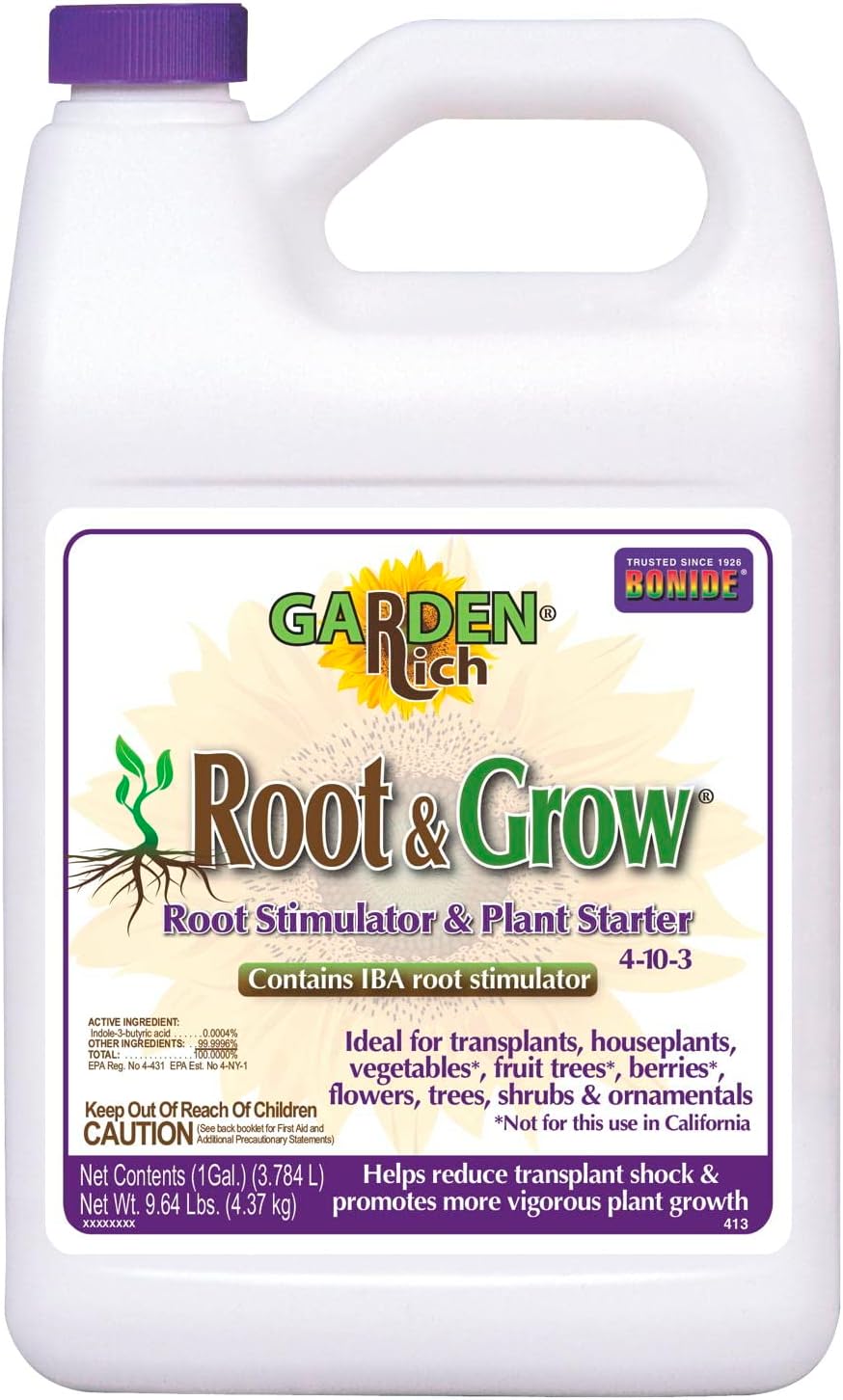
Bonide Garden Rich Root & Grow Root Stimulator & Plant Starter, 128 oz
Ideal for All Plants:
Perfect for transplants, houseplants, vegetables, fruit trees, berries, flowers, shrubs, and ornamentals. Supports strong, healthy growth across a wide variety of plants.
Boosts Root Development:
Formulated with rooting hormones to encourage early root formation, reduce transplant shock, and promote vigorous plant growth. Ideal for seeding, transplanting, or propagation.
Contains IBA Root Hormone:
Powered by Indole-3-butyric acid (IBA) — a proven plant hormone that stimulates root development and enhances nutrient uptake.
Balanced 4-10-3 Fertilizer:
Provides essential nutrients with 4% Nitrogen, 10% Phosphate, and 3% Potash supporting strong roots, lush foliage, and overall plant vitality.
Easy to Apply:
Simply mix with water and pour directly onto the soil and roots. Quick to use, effective, and ideal for both indoor and outdoor plants.
Gardenera Premium Organic Natural Mulch Cover - Enhance Your Indoor Plants with Natural Aroma and Organic Benefits - 1 Quart
Retains Moisture Efficiently:
Keeps soil consistently hydrated by reducing evaporation, helping plants stay healthy with less frequent watering.
Natural Weed Suppression:
Forms a protective barrier that blocks weed growth, minimizing competition for nutrients and light.
Improves Soil Health:
Gradually breaks down to enrich soil with organic matter, boosting microbial life and improving structure over time.
Nutrient-Rich and Sustainable:
Made from 100% natural ingredients, this mulch supports nutrient recycling while remaining eco-friendly and chemical-free.
Versatile Use:
Perfect for indoor and outdoor plants, flower beds, vegetable gardens, and containers.
VELCRO Brand ONE-WRAP Ties | Tree and Plant Supports for Effective Growing | Strong Gardening Grips are Reusable and Adjustable | Cut-to-Length, 18 ft x 2 in, Green-Recycled Plastic
Eco-Conscious Design:
Made from 65% recycled plastic, these reusable garden ties help reduce waste while supporting sustainable gardening practices.
Strong & Durable Hold:
Featuring a non-slip grip, the VELCRO ONE-WRAP design keeps plants, flowers, and vines securely staked and supported, even in rough weather.
Gentle on Plants:
Soft material won’t cut, scratch, or damage stems. Easily adjustable and repositionable as your plants grow.
Cut-to-Length Flexibility:
Customize the length you need — ideal for tomato cages, trellises, and young trees. Reusable season after season for a low-waste lifestyle.
Safe Tree Support:
Wide, flexible straps provide strong yet gentle support for saplings, preventing bark damage during staking and growth.
Multi-Purpose Use:
Perfect as a plant tie, wire, or tape also handy for securing garden tools, fencing, or cables.
Weather Resistant:
Built to withstand wind, rain, and sun exposure while maintaining a firm, reliable hold outdoors.
Ongoing Care & Maintenance for Rapid Growth & Health
Planting a fast-growing, climate-cooling tree is just the first step. Proper care in the early years ensures your tree thrives, providing maximum shade, evapotranspiration, and long-term benefits. Here’s how to maintain your tree for rapid growth and lasting health.
Watering for Establishment and Vigor
Expert Tip: Water Deeply and Consistently
Young fast-growing trees need deep, regular watering during their first few years to establish a strong root system. Frequent shallow watering encourages roots to stay near the surface, making the tree less resilient.
How Much and How Often
- Loamy Soil: Water every 7–10 days during dry periods.
- Sandy Soil: Water every 3–5 days, as sand drains quickly.
- Clay Soil: Water every 10–14 days; clay retains moisture longer.
Signs of Over watering: Yellowing leaves, soggy soil, root rot.
Signs of Under watering: Wilting leaves, brown edges, slow growth.
Expert Tip: Understand Evapotranspiration
Trees cool your surroundings not only with shade but also by releasing water vapor. Ensuring adequate water allows your tree to perform this natural cooling process effectively, enhancing the microclimate around your home.
Product Recommendation: Irrigation systems or watering bags help maintain consistent moisture, especially for fast-growing species that demand steady water.
The Power of Mulch
Mulch is a simple yet powerful tool to support tree health.
Benefits:
- Retains soil moisture
- Regulates soil temperature
- Suppresses competing weeds
- Enhances soil nutrients as it decomposes
Proper Application: Use the “donut” method, apply a 2–4 inch layer around the tree, keeping 2–3 inches away from the trunk. Avoid the “volcano” method, which piles mulch against the trunk and can cause rot.
Product Recommendation: Organic mulch, such as wood chips or shredded bark, works best.
Feeding Your Fast-Grower: Fertilization
Fertilization should be guided by a soil test. Over-fertilizing can harm roots and encourage weak, spindly growth.
Recommended Types:
- Slow-release fertilizers for a steady nutrient supply
- Organic fertilizers to enrich soil naturally
Timing and type depend on species, soil health, and climate, but generally, early spring is ideal for feeding before the growing season.
Pruning for Structure and Health
Expert Tip: Prune for Structure, Not Speed
Early structural pruning develops a strong central leader and well-spaced branches. Avoid “topping” or excessive branch removal, which can weaken the tree and cause future issues.
Pruning Checklist:
- Remove dead, diseased, or damaged branches
- Focus on creating a balanced, strong framework.
- Schedule pruning during dormant seasons to minimize stress
Protection from Pests, Diseases, and Environmental Stress
Expert Tip: Protect Young Trunks
Use tree guards to prevent rodent damage, sunscald, and accidental cuts from weed trimmers. Thin-barked species are particularly vulnerable.
Common Issues: Fast-growing trees may be susceptible to pests, fungal infections, and environmental stress if not properly maintained.
Integrated Pest Management (IPM):
- Monitor regularly for signs of disease or infestation
- Use natural or targeted solutions when needed.
- Consult an arborist for severe or unclear issues.s
Product Recommendation: Arborist consultation services are valuable for diagnosing tree health issues, planning large-scale plantings, or addressing complex problems.
Strategic Placement: Maximizing Your Tree's Cooling Impact
Planting a fast-growing, climate-cooling tree is only part of the equation. Strategic placement determines how effectively your tree shades your home, reduces energy use, and contributes to overall cooling. With thoughtful planning, you can transform your property into a Climate Action Yard, a personal micro-cooling zone that benefits both your home and the wider environment.
Designing Your Micro-Cooling Zone
Expert Tip: Strategic Placement is Key
For maximum cooling, plant deciduous trees on the east, west, and south sides of your home. In summer, they provide shade when the sun is strongest, reducing indoor temperatures. In winter, their bare branches allow sunlight to reach your home, warming your living spaces naturally. Evergreens are ideal for blocking cold winter winds, reducing heat loss, and creating year-round privacy.
Understanding Sun Paths and Wind Patterns
Mapping your property’s sun exposure throughout the day and year is essential. Track:
- Morning vs. afternoon sun: East-facing areas receive morning sun, while west-facing areas get intense afternoon heat.
- Seasonal changes: Sun angles shift, so consider both summer and winter patterns.
Identify prevailing summer winds to maximize evapotranspiration benefits. Trees positioned to take advantage of cooling breezes can lower local temperatures even further, enhancing outdoor comfort and indoor cooling efficiency.
Placement for Energy Savings
Shading Walls and Roofs: Trees planted near walls and rooftops prevent heat from penetrating the home, reducing reliance on air conditioning.
Shading Air Conditioning Units: Trees can shield outdoor units from direct sunlight, improving their efficiency and lifespan.
Deciduous Trees on South/West Sides: Provide summer shade when it’s most needed, while allowing winter sun to passively warm the home.
Evergreens for Winter Windbreaks: Reduce wind exposure, lowering heating needs and energy bills during colder months.
Beyond the House: Cooling Patios, Driveways, and Play Areas
Trees aren’t just for your home; they can shade hardscapes like patios, decks, and driveways, which absorb and radiate heat. Strategically placed trees make outdoor areas more comfortable, lower surface temperatures, and enhance usability during hot months.
Considerations for Urban Environments
Even in limited urban spaces, trees can make a big difference. Options include:
- Columnar or narrow varieties: Fit tight spaces while providing vertical shade.
- Smaller, fast-growing species: Offer quick cooling without overwhelming property boundaries.
Street Trees: Planting along sidewalks or near public areas helps reduce the urban heat island effect, improves pedestrian comfort, and adds beauty to your neighborhood.
By thoughtfully placing trees around your home and property, you can maximize shade, optimize evapotranspiration, reduce energy consumption, and create a welcoming, cooler environment. The combination of deciduous and evergreen trees, aligned with sun and wind patterns, transforms ordinary yards into micro-cooling zones that benefit both you and your community.
Beyond Cooling: Additional Benefits of Fast-Growing Trees
While fast-growing trees are powerful tools for reducing heat and energy use, their value extends far beyond cooling. When thoughtfully selected and placed, these trees provide environmental, economic, and social benefits that enhance both your property and your community.
Environmental & Ecosystem Services
Carbon Sequestration: Trees act as natural carbon sinks, absorbing CO2 from the atmosphere and helping mitigate climate change. Fast-growing species capture significant amounts of carbon in their early years, making them highly effective climate allies.
Improved Air Quality: Through photosynthesis, trees filter pollutants such as nitrogen oxides, particulate matter, and ozone, while producing oxygen. This contributes to healthier air for you, your family, and your neighbors.
Wildlife Habitat: Trees provide shelter, nesting sites, and food for birds, insects, and other wildlife. Incorporating native species supports local biodiversity and strengthens the ecological network in your yard.
Water Management: Strategically planted trees intercept rainfall, reduce stormwater runoff, and prevent soil erosion. Their roots improve water infiltration, helping manage local water resources more sustainably.
Economic & Social Advantages
Reduced Energy Bills: Shade from trees can lower home cooling costs by 20–30% in peak summer months. Combined with evapotranspiration, strategically placed trees can create measurable savings over the tree’s lifetime. A lifecycle cost analysis can show how planting fast-growing species delivers both environmental and financial returns.
Increased Property Value: Mature trees enhance curb appeal and create attractive landscapes, making homes more desirable and potentially increasing resale value.
Noise Reduction: Tree canopies act as natural sound buffers, reducing urban noise and creating more peaceful outdoor and indoor environments.
Enhanced Aesthetics and Well-being: Green spaces contribute to mental health, reduce stress, and encourage outdoor activity. A well-designed yard with fast-growing trees is not just functional, it’s restorative.
Unique Angle: Economic & Environmental ROI: Investing in trees yields dual returns: tangible financial savings and long-term ecological benefits. Each tree planted is a small but significant investment in a greener, more sustainable future.
Community Impact
Individual actions can ripple outward. By planting trees:
- You contribute to a greener, more resilient community.
- You encourage neighbors to participate, fostering a sense of shared environmental responsibility.
- You help reduce the urban heat island effect in local neighborhoods, making public spaces more comfortable for everyone.
Fast-growing trees are more than shade providers; they are climate allies, economic assets, wildlife supporters, and community builders. By planting and caring for them strategically, you are creating lasting value for your home, your neighborhood, and the planet.
Common Issues for Fast-Growing Trees:
- Insects and fungal infections
- Environmental stress (wind, drought, extreme heat)
- Root interference from nearby structures
Integrated Pest Management (IPM) Strategies:
- Regularly monitor for signs of stress or infestation
- Apply targeted, eco-friendly solutions when needed.
- Consult an arborist for complex or large-scale problems.
Product Recommendation: Arborist consultation services are invaluable for diagnosing tree health issues, planning large-scale plantings, or managing complex pest and disease challenges.
Strategic Placement: Maximizing Your Tree's Cooling Impact
Planting a fast-growing, climate-cooling tree is only part of the solution. Where you place it determines how effectively it shades your home, reduces energy consumption, and enhances your property’s microclimate. With strategic planning, you can transform your yard into a Climate Action Yard, a personal micro-cooling zone that benefits both your home and the broader environment.
Designing Your Micro-Cooling Zone
Expert Tip: Strategic Placement is Key
Plant deciduous trees on the east, west, and south sides of your home. These trees provide shade when the sun is strongest in summer, while allowing winter sunlight to warm your home. Evergreens make excellent windbreaks, reducing winter heat loss and protecting outdoor spaces from cold winds.
Unique Angle: The Climate Action Yard
By thoughtfully combining deciduous and evergreen trees, you can design a yard that actively cools your home, or even a hugelkultur garden bed.
Understanding Sun Paths and Wind Patterns
Mapping your property’s sun exposure throughout the day and year helps you determine where trees will provide the most benefit. Tracking morning and afternoon sun ensures you shade areas most exposed to heat during peak hours.
Prevailing Winds: Identifying summer wind directions allows you to position trees for optimal evapotranspiration, maximizing the cooling effect.
Image Suggestion: Diagram showing sun path over a house at different seasons.
Placement for Energy Savings
Shading Walls and Roofs: Trees positioned near walls and rooftops reduce heat gain, lowering indoor temperatures and decreasing air conditioning usage.
Shading Air Conditioning Units: Strategically placed trees can shade outdoor AC units, improving efficiency and extending their lifespan.
Deciduous Trees on South/West: Provide summer shade while allowing winter sun to penetrate, reducing both cooling and heating costs.
Evergreens for Winter Windbreaks: Reduce wind exposure, conserve heat, and improve outdoor comfort.
Image Suggestion: Before-and-after illustration of a house with and without strategic tree shading.
Beyond the House: Cooling Patios, Driveways, and Play Areas
Trees can also shade hardscapes such as patios, driveways, and playgrounds, which absorb and radiate heat. Strategically placed trees make outdoor spaces more comfortable and functional during hot months, reducing the heat reflected toward the home.
Considerations for Urban Environments
Even with limited space, trees can deliver significant benefits:
- Street Trees: Reduce the urban heat island effect, provide shade for pedestrians, and improve neighborhood aesthetics.
- Columnar or Smaller Varieties: Fit tight spaces while offering vertical shade.
- Native Species: Often require less maintenance, tolerate local conditions, and support local wildlife.
Beyond Cooling: Additional Benefits of Fast-Growing Trees
Fast-growing, climate-cooling trees do more than shade your home; they offer a wide array of environmental, economic, and social benefits that enhance your property and community. Understanding these advantages highlights the full value of strategic tree planting.
Environmental & Ecosystem Services
Carbon Sequestration: Trees act as natural carbon sinks, capturing CO2 from the atmosphere and helping to mitigate climate change. Fast-growing species absorb significant carbon in their early years, making them highly effective climate allies.
Improved Air Quality: Trees filter pollutants such as nitrogen oxides, particulate matter, and ozone while producing oxygen, improving local air quality for residents and wildlife alike.
Wildlife Habitat: Fast-growing and native species provide food, shelter, and nesting sites, supporting local biodiversity and strengthening ecosystems.
Water Management: Trees intercept rainfall, reduce stormwater runoff, and prevent soil erosion. Their root systems enhance water infiltration, contributing to sustainable landscape management and flood mitigation.
Economic & Social Advantages
Reduced Energy Bills: Shade from trees lowers summer cooling costs, while strategic winter placement can reduce heating needs. Over the lifespan of a fast-growing tree, these energy savings often outweigh the initial investment in planting and maintenance.
Lifecycle Cost Analysis: Investing in fast-growing, climate-cooling trees provides measurable returns. While upfront costs include saplings, soil amendments, and irrigation, the long-term savings on energy bills, plus added property value, make them financially smart choices.
Increased Property Value: Trees enhance landscape aesthetics and market appeal. Expert Quote: “Well-placed mature trees can increase property values by up to 15%,” notes a real estate analyst.
Noise Reduction: Tree canopies act as natural buffers against urban noise, creating a more peaceful outdoor and indoor environment.
Enhanced Aesthetics and Well-being: Green spaces contribute to mental health, reduce stress, encourage outdoor activity, and create inviting spaces for relaxation and recreation.
Unique Angle: Economic & Environmental ROI: Fast-growing trees provide dual benefits, immediate environmental impact and long-term financial returns, making them one of the most effective investments homeowners can make in sustainable landscaping.
Community Impact
Individual tree planting contributes to greener, more resilient neighborhoods. Strategically planted trees:
- Help reduce the urban heat island effect, improving comfort for everyone.
- Encourage neighbors and communities to participate in environmental stewardship.
- Foster a sense of shared responsibility for local climate resilience and sustainability.
Fast-growing trees are more than shade providers; they are carbon absorbers, property enhancers, wildlife supporters, and community builders. By planting and caring for them thoughtfully, you create lasting value for your home, your neighborhood, and the planet.
Conclusion: Your Role in a Cooler, Greener Future
Planting fast-growing, climate-cooling trees is more than a landscaping choice; it’s a tangible way to make a difference for your home, your community, and the planet. Every tree you plant contributes to a cooler microclimate, improved air quality, enhanced biodiversity, and long-term energy savings.
Recap of Key Benefits:
- Environmental Impact: Trees sequester carbon, filter pollutants, manage stormwater, and provide wildlife habitat.
- Economic Advantages: Shade lowers energy bills, increases property value, and offers a measurable return on investment.
- Community & Social Value: Trees reduce urban heat, buffer noise, and foster shared responsibility for a greener neighborhood.
Final Encouragement: Remember, each tree planted is a step toward a more resilient, sustainable, and comfortable environment. Even a single tree can initiate a ripple effect, cooling your yard, supporting wildlife, and inspiring neighbors to take action.
Cooling Potential Calculator
See how much impact your trees can make! Enter your details to estimate temperature reduction, energy savings, and carbon sequestration.
Your Results Will Appear Here
Enter your information and click "Calculate Cooling Benefits" to see how much impact your trees can make!
Your Climate Action Impact
Based on 5 Maple trees in Zone 5b, Northeast
Zone-Specific Recommendations
Impact Over Time
Ready to Make a Difference?
Your 5 trees could reduce temperatures by 2-5°F and save you $45 annually on cooling costs.
Start Your Climate Action Yard Today
Right Tree, Right Place
Choose species that thrive in your USDA zone for best results
Seasonal Planting
Fall and early spring are ideal for tree planting in most zones
Local Programs
Many cities offer free trees or planting programs for residents
Your actions matter. Together, small steps can lead to big change. Each tree is a personal investment in a cooler, greener, and more sustainable future.


